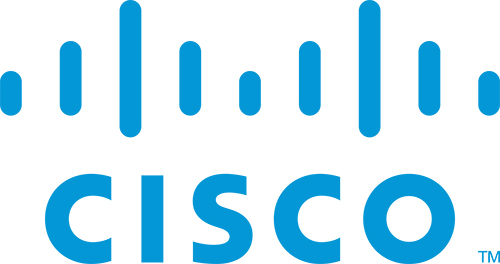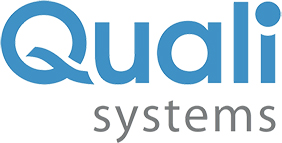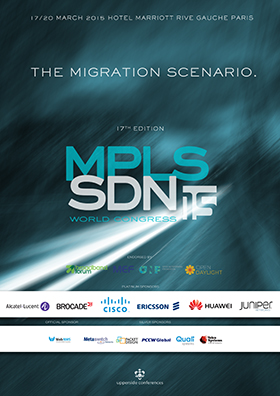ACCESS WITH PASS | 1 | 4 | 5 | 7 |
SPRING Session
RESILIENCE Session
CONFERENCE DAY 2 | THURSDAY 19 MARCH 2015
| 08.00 | WELCOME, REGISTRATION AND COFFEE | |
 CHAIRMAN Andrew Malis, Huawei |
| 08.30 | Re-thinking Traffic Engineering in the light of SDN & Segment Routing | |
 Segment Routing offers new capabilities in how traffic can be engineered. It can engineer traffic while keeping nodes other than the ingress free of state. It can define paths for tunnels that take advantage of ECMP over select segments. Further SR offers fine grain control of BGP egress selection. Examining the elements above and how they can be combined to enhance Traffic Engineering. Segment Routing offers new capabilities in how traffic can be engineered. It can engineer traffic while keeping nodes other than the ingress free of state. It can define paths for tunnels that take advantage of ECMP over select segments. Further SR offers fine grain control of BGP egress selection. Examining the elements above and how they can be combined to enhance Traffic Engineering. George Swallow, Distinguished Engineer, Cisco |
||
| 08.55 | Segment Routing: Ongoing Deployment Use-cases | |
 By March 2015, the first SR deployments will be ongoing. Reviewing the requirements of the involved network operators as well as the experience collected during the design and lab qualification process. By March 2015, the first SR deployments will be ongoing. Reviewing the requirements of the involved network operators as well as the experience collected during the design and lab qualification process. Clarence Filsfils, Cisco Fellow |
||
| 09.20 | SPRING Interoperability Testing Report | |
 First early or official version of codes including SPRING technology are available from different vendors. Providing feedback on intensive interoperability tests of three implementations including basic MPLS transport, FRR and LDP interoperability. First early or official version of codes including SPRING technology are available from different vendors. Providing feedback on intensive interoperability tests of three implementations including basic MPLS transport, FRR and LDP interoperability. Stephane Litkowski, Orange BUSINESS SERVICE |
||
| 09.45 | Network Service Chaining for Service Providers: Opportunities and Challenges | |
 Use Cases and Requirements Use Cases and Requirements Scalability Challenges, Benefits and Service Impact Architecture and Solution Options Werner Weiershausen, Chief Architect Packet-Optical Transport Networks, Deutsche Telekom AG |
||
| 10.10 | Evolution and Migration Path into Programmable Multi Layer Networking | |
 Discussing controlling and managing IP / MPLS architecture using SDN. Demonstrating a concept of support for Segment Routing based on Open Daylight architecture. Examples of Segment Routing applications such as: optimization of the network in near real-time, network applications optimized angle and multi-tenant environment, segment routing and packet optical networks are presented. Discussing controlling and managing IP / MPLS architecture using SDN. Demonstrating a concept of support for Segment Routing based on Open Daylight architecture. Examples of Segment Routing applications such as: optimization of the network in near real-time, network applications optimized angle and multi-tenant environment, segment routing and packet optical networks are presented. Jeff Tantsura, Ericsson |
||
| 10.35 | COFFEE BREAK | |
| 11.05 | SPRING-based (i.e., source routing based) Service Chaining | |
 Talking about how to leverage the SPRING-based source routing mechanism to realize the service path layer functionality of the Service Function Chaining (SFC), i.e., steering the selected traffic through the Service Function Path (SFP). Talking about how to leverage the SPRING-based source routing mechanism to realize the service path layer functionality of the Service Function Chaining (SFC), i.e., steering the selected traffic through the Service Function Path (SFP). Xiaohu Xu, Senior Staff Engineer, Huawei |
||
| 11.30 | A Practical Approach for Inter-domain Traffic Engineering | |
 Doing automated outbound load-balancing of Internet traffic is an emerging trend of Data Center Operators. Highlighting the use and role of BGP-LU (RFC3107) and MPLS for controller based load-balancing of egress traffic. Doing automated outbound load-balancing of Internet traffic is an emerging trend of Data Center Operators. Highlighting the use and role of BGP-LU (RFC3107) and MPLS for controller based load-balancing of egress traffic.Hannes Gredler, Juniper Networks |
||
| 11.55 | Microsoft Segment Routing | |
 Describing the design and implementation of Segment Routing with an MPLS dataplane in a Cloud Scale service provider network, including deployment challenges and interop issues. Describing the design and implementation of Segment Routing with an MPLS dataplane in a Cloud Scale service provider network, including deployment challenges and interop issues.Tim LaBerge, Microsoft |
| 12.30 | LUNCH |
| 14.00 | Stitching Layers and Domains for Enhanced Service Resiliency | |
 Reviewing the existing end-to-end service resiliency technologies in a single domain and single layer network. One of the significant progresses is to use the shared backup path protection for enhance service resiliency against any dual-link failures in poorly connected networks. Reviewing the existing end-to-end service resiliency technologies in a single domain and single layer network. One of the significant progresses is to use the shared backup path protection for enhance service resiliency against any dual-link failures in poorly connected networks. Victor Liu, Huawei USA |
||
| 14.30 | Resilient MPLS Rings | |
 Describing the special nature of rings, and the special needs of MPLS on rings. Showing how these needs can be met in several ways, some of which involve extensions to protocols such as IS-IS, OSPF, RSVP-TE and LDP. Describing the special nature of rings, and the special needs of MPLS on rings. Showing how these needs can be met in several ways, some of which involve extensions to protocols such as IS-IS, OSPF, RSVP-TE and LDP. Kireeti Kompella, Juniper Networks |
| 15.00 | V6 World Conference Report | |
 Mark Townsley cisco |
||
Placez ici le
contenu de id "main_int_col_left_encadre_coffee_1"
SDN WAN & CLOUD SESSION | 15.15 | COFFEE BREAK |
| 15.45 | SDN for the WAN: Benefits of Centralised Traffic Engineering | |
 Discussing a model for SDN in the Wide Area Network (WAN). In particular, focusing on the use of a centralised real-time traffic-engineering controller. Discussing key protocol ingredients that enable the implementation of such a real-time controller, including BGP-LS and Active Stateful PCE. Discussing a model for SDN in the Wide Area Network (WAN). In particular, focusing on the use of a centralised real-time traffic-engineering controller. Discussing key protocol ingredients that enable the implementation of such a real-time controller, including BGP-LS and Active Stateful PCE. Julian Lucek, Juniper Networks |
||
| 16.15 | A New SDN-based Paradigm for Hyper-Scale Cloud/DC at Low Cost | |
 Introducing a new SDN-based paradigm for hyper-scale elastic cloud at low cost, which supports tens of millions of physical servers as the network endpoints and thousands of NFV instances. We reformulated highly-complex, NP-complete problems into manageable ones, while achieving a global optimality. Both Fat Clos ECMP fan-out and any-to-any TE with tens of millions of tunnel endpoints are supported concurrently with surprisingly small FIB size in all DC fabric and core switches. Introducing a new SDN-based paradigm for hyper-scale elastic cloud at low cost, which supports tens of millions of physical servers as the network endpoints and thousands of NFV instances. We reformulated highly-complex, NP-complete problems into manageable ones, while achieving a global optimality. Both Fat Clos ECMP fan-out and any-to-any TE with tens of millions of tunnel endpoints are supported concurrently with surprisingly small FIB size in all DC fabric and core switches. Luyuan Fang, Microsoft |
||
| 16.45 | The Role of Analytics-Based Orchestration in Overlay and Underlay Networks | |
 Presenting SDN analytics for monitoring the performance of overlay networks, and the IP/MPLS control plane protocols in the underlay network. Showing how performance degradation in the overlay network is linked to routing incidents and traffic congestion in the underlay network, and how a Network Access Broker can remedy these problems by computing and provisioning alternate paths. Presenting SDN analytics for monitoring the performance of overlay networks, and the IP/MPLS control plane protocols in the underlay network. Showing how performance degradation in the overlay network is linked to routing incidents and traffic congestion in the underlay network, and how a Network Access Broker can remedy these problems by computing and provisioning alternate paths. Cengiz Alaettinoglu, CTO, Packet Design |
||
| 17.15 | Carrier Grade SDN: Requirements and Gaps | |
 While it could be cost-effective for service providers to move their infrastructures from traditional architectures to one based on SDN, there are a number of obstacles as well. This talk will discuss the current state of the art in carrier grade SDN, service provider requirements which distinguish them from data center and campus networks, and how the resulting gaps may be met. While it could be cost-effective for service providers to move their infrastructures from traditional architectures to one based on SDN, there are a number of obstacles as well. This talk will discuss the current state of the art in carrier grade SDN, service provider requirements which distinguish them from data center and campus networks, and how the resulting gaps may be met. Andrew Malis, Distinguished Engineer, Huawei |
||
| 17.45 | Cloudwatt: Extending Private Networks in the Public Cloud | |
| One of the key reasons for Cloudwatt to use OpenContrail as its SDN, beyond the distributed nature of the vrouter and associated scalability, was the native support for standard based protocols BGP & MPLS. Covering the client use cases that are enabled by this implementation. Foucault de Bonneval, Cloudwatt |
| 18.15 | END OF CONFERENCE DAY TWO | |
















